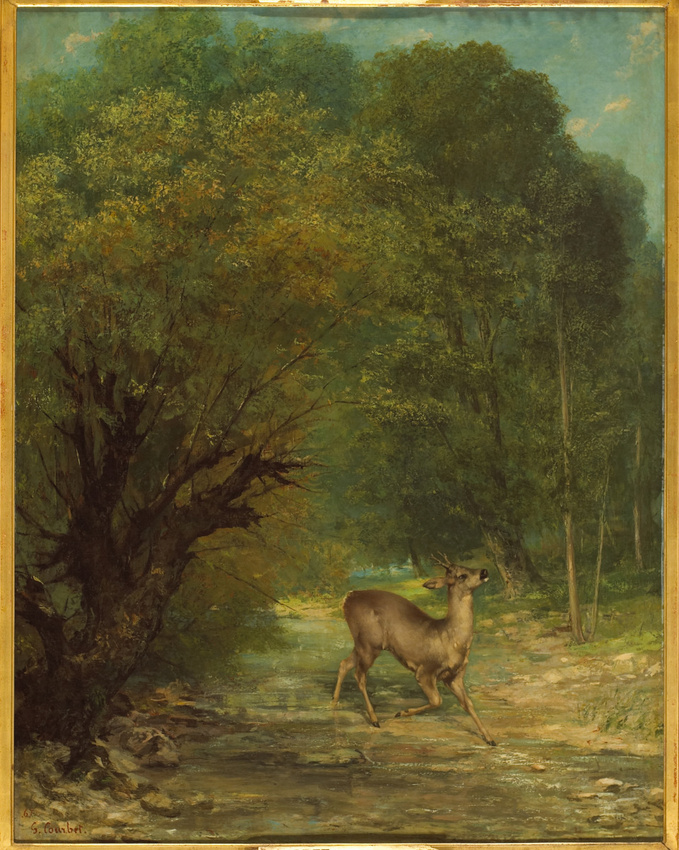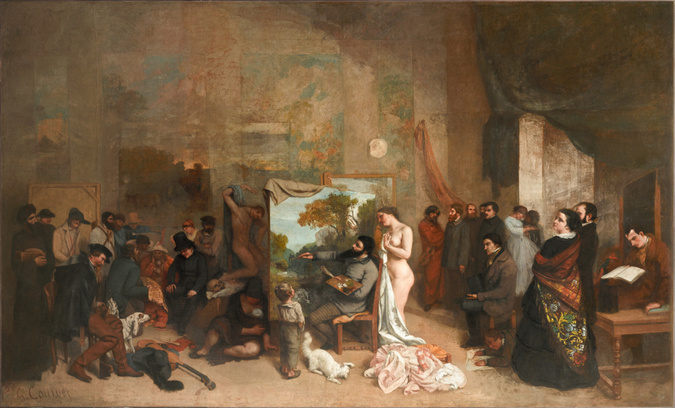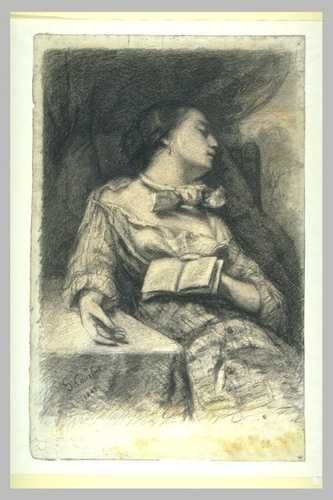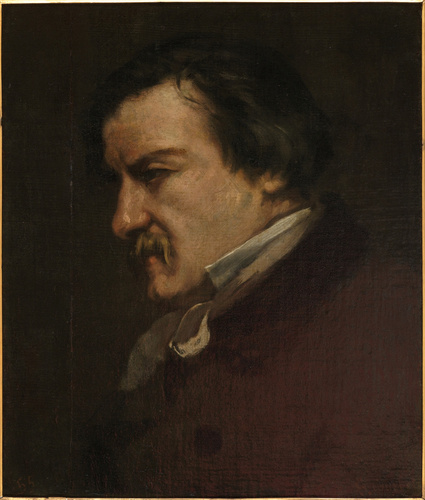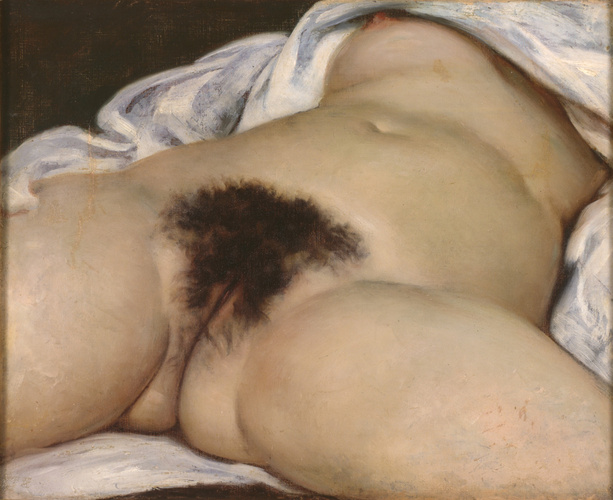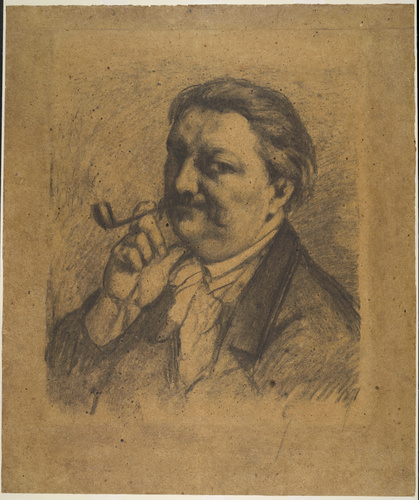Le Chevreuil chassé aux écoutes, printemps
Hunting was one of Courbet's favourite pastimes. It enabled him to observe nature and wild animals. Both in the Franche-Comté region of France and in Germany where he stayed in 1859, he found subjects for paintings that immediately appealed to the public. Thus, at the 1868 Salon, The Hunted Roe Deer on the Alert, Spring received unanimous critical acclaim. Even the caricaturist Gill, in Le Salon pour rire, admired it, along with another of Courbet's submissions: A Beggar from Ornans (Glasgow, Art Gallery and Museum). He wrote: "Here there is a confusion of petty and pretentious trifles [...] the painter from Ornans has trounced them all, bringing a breath of fresh air with these two paintings".
The painting depicts a clearing and a stream in light shades, quite rare in Courbet's work. Castagnary, his great friend and supporter, draws attention to the painter's "refined" technique and to the translucence of the landscape. "Look closely at this ground, this running water, this wonderfully light, clear undergrowth, this profound and authentic harmony".
As for the dramatic isolation of this deer, perhaps it is a symbol, revealing Courbet's often-expressed desire to portray the artist struggling against society.
Courbet Dossier
